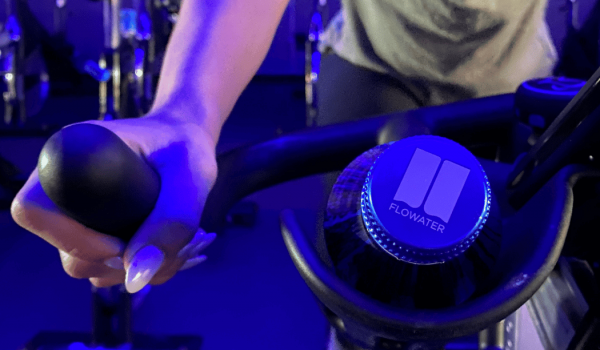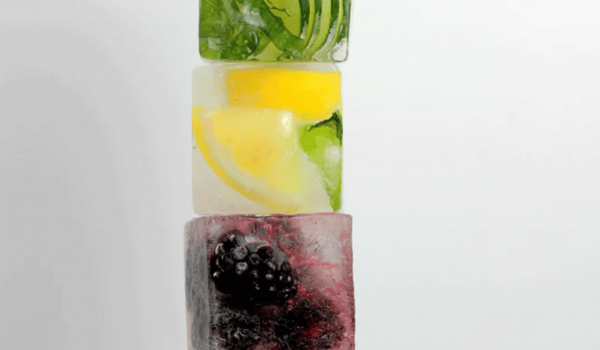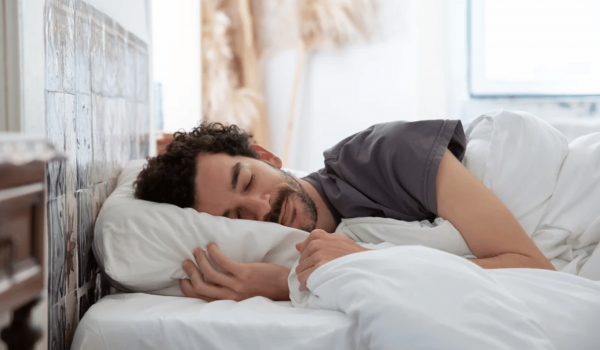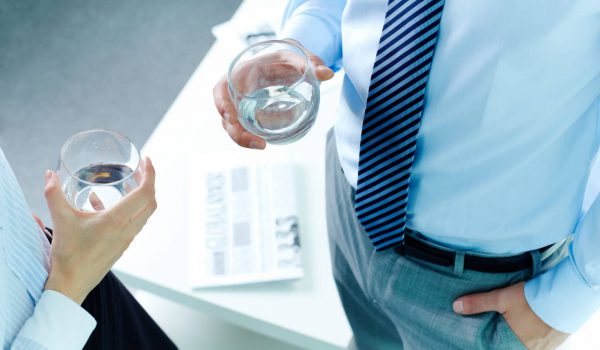Hotels are responsible for following proper health and sanitization protocols to keep guests safe and comfortable. This includes everything from in-room cleanliness to fresh drinking water access, which leads to the question: Is hotel tap water safe to drink? And more importantly, are they using a water purifier for hotels?
In general, most hotel tap water is safe to drink by U.S. regulatory standards. Because of the protocols set forth by the Centers for Disease Control & Prevention (CDC), when it comes to water filtration and sanitization, it’s deemed potable. However, each city has its own sanitization procedures that affect water quality, meaning not every supply is equal.
Furthermore, each city receives its water supply from different sources, which means some may have a higher risk of contamination than others. Lastly, just because the water is deemed acceptable to drink by health standards doesn’t necessarily mean you should drink it, especially when better alternatives are available.
The question of “Is hotel water safe to drink?” is very different from deciding whether it’s enjoyable to drink it or not. The hotel room tap water used to wash hands or brush teeth is likely not the same water guests are willing to use to fill up their in-room coffee maker or reusable water bottle. When guests question the quality of your property’s tap water, transparency is key.
But rather than simply filling them in on city water treatment regulations, it’s better to have a fresh water solution available like FloWater’s Touchless Water Dispenser as an alternative for those who aren’t convinced of the hotel’s quality of tap water. However, let’s explore first how tap water is treated for safety.
Public Water System Safety Regulations
If a guest asks, can you drink hotel tap water? The short answer is: yes. Hotels follow the same drinking water standards as other businesses and homes. With the Safe Drinking Water Act (SDWA) in effect, there is a specific process to decontaminate water supplies to a level that’s deemed safe to drink. The U.S. Environmental Protection Agency (EPA) sets legal limits on over 90 contaminants found in drinking water.
Additionally, the SDWA gives each state the option of setting and enforcing their drinking water standards if minimum EPA requirements are already met.1 These contaminants include chemical and microbial type contaminants, and the list is reviewed every five years to determine if new ones should be added. However, this doesn’t automatically mean your building’s tap water is free of chemicals, pollutants, and other toxins and contaminants that affect the safety, taste, and appearance of the tap water.
The challenge with maintaining good drinking water quality in hotels is that at any point during the process, there’s a chance of increased contamination. First, although the SDWA is in effect, it’s up to each municipality to diligently follow the regulations and maintain the high standards year after year.
Second, bacterial contamination occurs when the water is improperly stored, handled, and served. And third, even if the water quality starts from a good place, the age and deterioration of old pipes can cause metals and other pollutants to leach into the water. By the time it reaches the tap, the quality of the water has changed.2
Hotel Tap Water in the Time of Covid
In addition to the standard national drinking water regulations, the effects of the Covid-19 pandemic added another caveat into answering the question of: Can you drink hotel tap water? With many hotels halting a majority of the services for continuous months in 2020, it meant stagnant water in pipes from lack of use. Whenever there’s stagnant water, there’s a greater likelihood of bacteria buildup in the pipes and the water.
So, is drinking tap water from a hotel safe in light of Covid-19? Systems must be flushed and drained before water can return to its normal levels of EPA-approved contaminants. As a result, it’s important for hotels to check their water systems and drain any stagnant water that may have been sitting during the months where hotels were closed down or at minimal capacity.3
The EPA also recommends hotel building owners and managers take proactive steps to protect public health by minimizing water stagnation. This includes:
- Review plumbing and water usage in the building to ensure it’s functioning properly.
- Contact the water utility to determine the quality of the distribution in the area where water is received.
- Schedule regular maintenance on water treatment systems used throughout the hotel.
- Flush the building’s plumbing system regularly to avoid stagnant water buildup.
One of the most common and harmful contaminants found in water supplies is Legionella bacteria. Though found in freshwater environments, it can spread and grow in human-made building water systems. Consumption of Legionella can lead to lung infection similar to other types of pneumonia with symptoms such as fever, cough, shortness of breath, and muscle aches.4
This is one of the many diseases and harmful conditions caused by contaminated drinking water. To ensure the safety of your building’s water, it’s best to have the water department run tests on your supply and follow the recommended sanitization protocols. It’ll give you information about what’s found in your water and what can be done to improve its quality.
Filtration Methods Hotel Use to Provide Guests with Clean Drinking Water
A hotel’s public water system already goes through whatever protocol the city has in place for its community. This typically includes a combination of water treatment methods such as:
- Coagulation and flocculation – The first step in the water treatment process is when positively charged chemicals are added to the water. This neutralizes the negative charge of dirt and other dissolved particles found in the water and binds with them to create larger particles referred to as floc.
- Sedimentation – As the floc settles to the bottom of the water supply, this process is referred to as sedimentation. It separates the contaminated particles from the rest of the water supply.
- Filtration – In the next water treatment phase, the clear water on top passes through filters of various spore sizes to remove dissolved particles, including bacteria, viruses, and chemicals.
- Disinfection – Finally, a disinfectant is added to kill any remaining parasites to protect the water as it flows to homes and businesses. Many municipalities have begun to use chloramine for their disinfection state, although some still use chlorine.5
From there, many hotels follow a similar route to private households with additional filtration methods such as reverse osmosis, distillation, or ultraviolet treatment systems. Each of these water treatment technologies offers a different level of filtration to create drinking water suitable for consumption.
- Reverse osmosis – This water treatment process reverses the flow of water in a process called osmosis so water passes to a more diluted solution by passing through a semipermeable membrane with a pore size of approximately 0.0001 micron. There are many reverse osmosis water benefits as this method is effective in removing viruses, bacteria, and chemical contaminants, such as copper, chromium, lead. Reverse osmosis may also reduce other chemicals such as arsenic, radium, and sulfate, to name a few.
- Distillation – These systems use the process of heating water to a boiling point and then collecting its vapor, which leaves many of the contaminants like bacteria and viruses behind. It’s also effective in removing common contaminants found in tap water such as chromium, arsenic, and lead.
- Ultraviolet Treatment Systems. A lesser talked about water treatment method, ultraviolet systems use ultraviolet light to disinfect the water (when pre-filtration is involved) and reduce the amount of present bacteria, such as E.coli and salmonella.
Each of these methods may or may not be used by hotels and could have a varying degree of effectiveness based on how stringent their city’s water system is to begin with and the condition of their pipes and plumbing systems.
A Better Way to Water Purification
Instead of second-guessing whether your hotel tap water is safe to drink, why not offer guests a better solution through the use of clean and effective hotel water dispensers? The FloWater Touchless Water Dispenser implements and combines many of the main technologies water utilities and homes use to deliver refreshing, clean water.
The Touchless Water Dispenser employs the use of sedimentation and advanced osmosis, in addition to a carbon filter which eliminates smaller particles, as well as unpleasant odors and tastes. It removes up to 99% of any impurities typically found in tap water. However, to wholly purify the water often means filtering out the good with the bad. Other water treatment systems only filter, which means you don’t maintain the beneficial parts, such as electrolytes and minerals.
Fortunately, FloWater’s advanced seven-stage system filters, purifies, and improves tap water. There are individually activated oxygen, alkaline, electrolyte, and coconut carbon filters that add important elements to improve the taste and overall quality of what’s being dispensed. The result? A refreshing way to offer guests crisp, delicious purified water on-demand while reducing plastic waste.
The health and safety of guests is important now more than ever and hotels must be forthcoming in their solutions. Having a convenient FloWater Touchless Water Dispenser at their disposal ensures everyone has a safe, clean, and satisfying water resource. Visit us today to discover some of the best sustainable hotel ideas to lessen your carbon footprint and help you become an industry leader.
Sources:
- U.S. Environmental Protection Agency. Drinking Water Regulations. https://www.epa.gov/dwreginfo/drinking-water-regulations
- Hotel Management. What hoteliers need to know about water quality. https://www.hotelmanagement.net/operate/why-hoteliers-need-think-about-water-safety
- U.S. Environmental Protection Agency. Maintaining or Restoring Water Quality in Buildings with Low or No Use. https://www.epa.gov/sites/default/files/2020-05/documents/final_maintaining_building_water_quality_5.6.20-v2.pdf
- The Centers for Disease Control and Prevention. Signs and Symptoms (Legionnaires’ Disease). https://www.cdc.gov/legionella/about/signs-symptoms.html
- The Centers for Disease Control and Prevention. Water Treatment. https://www.cdc.gov/healthywater/drinking/public/water_treatment.html
- The Centers for Disease Control and Prevention. A Guide to Drinking Water Treatment Technologies for Household Use. https://www.cdc.gov/healthywater/drinking/home-water-treatment/household_water_treatment.html










